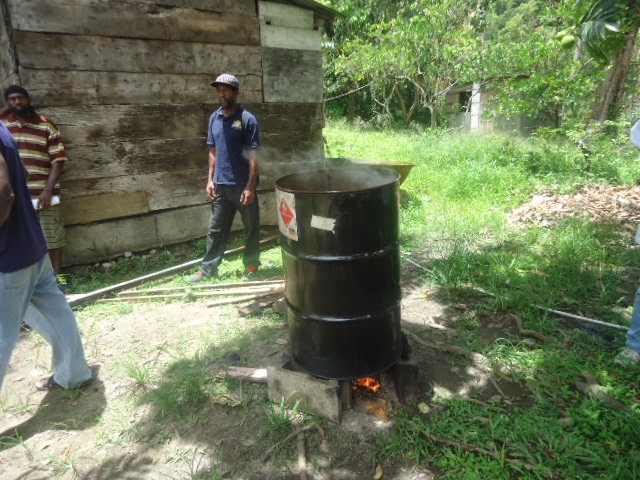Three's a crowd?
Why is it that I imagine that the idyllic picture of cherries have to be of paired cherries? The images I recall, though, are not of the West Indian variety. Nevertheless, I was excited to find a picture perfect pair of West Indian cherries.
 |
| Say:"Cherries!" |
A cherry by any other name...
Other names by which the West Indian cherry is known include:
- Scientific Name: Malpighia Punicifolia L.
- Barbados cherry
- Native cherry
- Garden cherry
- French cherry
- Acerola
When life gives you cherries...
More than your recommended daily allowance of Vitamin C from a single cherry?! After the initial grimace when taste buds first encounter the sour shock, the antioxidant properties should return your face to its previously wrinkle free countenance. Antioxidants combat free radicals which cause cellular damage which contribute to aging and a variety of non-communicable diseases. A greater number of cherries can be consumed by crafting recipes which reduce the acidity, from simple juices to wines.
Fun fact: So sour are these cherries that "[w]ine made from Barbados cherries in Hawaii was found to retain 60% of ascorbic acid".
Cherries are additionally a source of dietary fibre, Vitamin A, Vitamin B, magnesium, potassium and iron.
 |
| West Indian cherry tree. Cherries are hiding in there. |
Additional Source:
If you found this post interesting, visit the links below:





